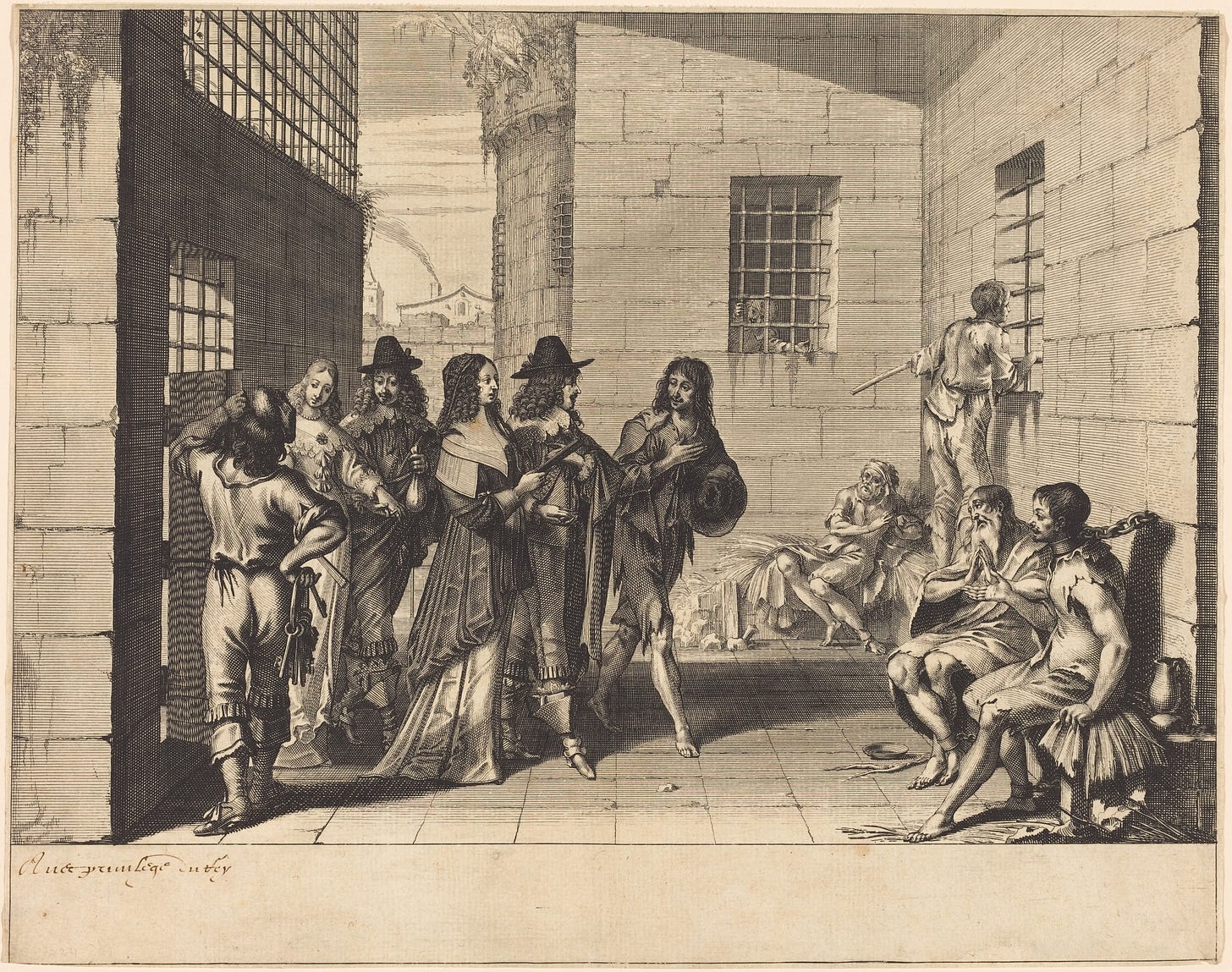
In their essay, The Hardest Winter of My Life poet Andrea Gibson wrote: Neatly resolved stories signal that the exploration is over. Sometimes it’s not about knowing the answer but being inside the question together. Being inside the hardest winter together. Being beside each other in the cold when, finally, the first brave sprout pushes through the hard earth, and a smile breaks the surface of our faces, and another season of our lives is upon us. And we gasp in color.
I want to circle the phrase “being inside the question together.” Danny and I step inside “the question” every time we visit prison. We move with careful attention and sensitivity through the environment. Fleeting impressions challenge us to wrestle with the complications of humanity and the difficulties inherent to the carceral system. Even as I write this, Danny is sorting through his notes from our visits to Coffee Creek, Powder River, Snake, and Easter Oregon this week. The exploration feels like it has just begun.
A prison is a cacophony of sound and moving bodies, Correctional Officers standing still in the corner. We encounter harsh realities that we cannot ignore. We also catch strangely beautiful details like the faded blue of denim uniforms contrasted against the orange silkscreen that reads: INMATE. As we walk through the corridor, we are alert to what is happening around us. Over the years, we have reported what we observe and describe this place most people are unlikely to visit. We think we have a feel for prison, and then, we have a wholly new experience. Only the surface has been scratched. While we sit with our writers for a spell during their harshest winter, there is a great chasm in our knowledge. Unlike our writers, we walk past the gate after every workshop, moving on to deciding if we are going to buy another coffee, stop to run an errand, hurry home to walk the dog. While we carry our writers with us, we also have ability to put prison down. We are forever outsiders.
Theron Hall’s Dear Lynn was originally written for a college course. In it, Hall describes the systemic racism that has historically put targets on the backs of Black and Brown people. Theron pens a warning to his niece: Protect and arm your mind with knowledge of the truth. Theron’s education has fueled his superpowers.
Ricky Fey wrote Served Ice Cold several years ago, though this story could easily be gathered from current headlines. We’ve paired it with the 1884 painting The Land of Promise by Charles Frederic Ulrich. These pieces together grapple with the United States’s history of broken promises.
In Joined, R. Miranda writes: “the idea of being connected is paramount to survival, even more so for my desire to thrive. The connections I've made are as varied and unique as our fingerprints. While some of these relationships have stood the test of time, and others became severed, they all have left their mark on my soul.”
Kula Paul Adric’s Family Circles presents the evolution of this thinking around family. As we work with our writing groups in each prison, we have come to realize that we are growing seven family circles around Oregon: Creating a Family Circle within these walls is a real thing. But who do you let in? Who can you trust? Growing up the way I did, I learned quick that you can’t trust anyone — sometime not even your own family.
Gentry Visiting a Prison by French artist Abraham Bosse (1602-1676) shows two wealthy couples moving through a dungeon. As I look at this etching, I think of how the story is framed. Neither gentry nor chained prisoner, the artist Bosse observes, composes, and records the scene as part of a portfolio entitled Acts of Mercy. The first gentleman engages in conversation with a prisoner, the second gentleman and his lady speak with the jailer. It is only the first lady who seems to see the prisoner chained by his neck. She looks at the seated prisoners directly. And he seems to be engaged in conversation with her, his hand in a conversational gesture. While he is chained by a dog, he is neatly groomed and his face relaxed. This is in contrast the older gentleman who seems to be imploring for mercy. The precision of the line work, gives the entire image a strange neutrality. As I spend time looking at it, it occurs to me that each of our writers has been transported in chains at some point or another and this image from the 1600s takes on a new urgency. | TDS
NOTE: For Issue No 7 How We Make Family, we have been digging into the National Gallery of Art’s archive, which consists of nearly 160,000 images from Western art history, dating back to the Middle Ages. We are borrowing images that are free and in the public domain to accompany (not illustrate!) our writers’ pieces. The portraits challenge us to see antiquated images placed next to contemporary writing. How do these world views push and pull at one another?


👌beautiful words
!!!